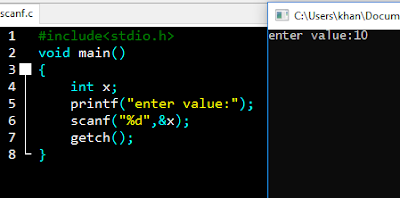let us understand input/output instruction:-
1)Input instruction:- to give an input in c program, input instuction is used which is done by scanf() method. It is not a keyword.
- Syntax of scanf:-
- scanf("format specifier",&variable name);
- where format specifier are %d,%f etc for int,float value respectively
- example:-
2) Output instruction:- to display anything on the screen input instruction is used which is done by
printf() method.
note:- for input output stdio.h header file is used and getch() is used for to hold the screen that's why we seen an output


Comments
Post a Comment